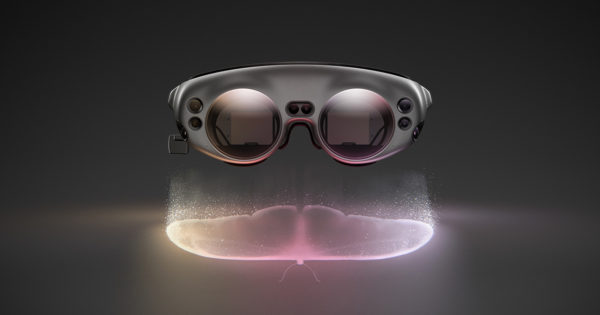
Key insights:
When B-Reel technology director Eric Heaton first came across the Magic Leap headset at the Consumer Electronics Show in Las Vegas a few years ago, it seemed to be a “super intriguing” fix for many of the limitations of augmented reality at the time.
Chris Alick, now vp and creative technology director at Deutsch L.A., also saw the high-fidelity imagery, portability and advanced wearable tech the startup promised as a potential game-changer for the mixed-reality space.
“All of those things combined is what made Magic Leap really exciting,” Alick said. “It was kind of this secret vaporware company in Florida somewhere.”
Years later, plagued by product delays and an underwhelming 2018 launch, the embattled headset company reportedly laid off around half its workforce this week—about 1,000 staffers—as it pivoted away from the consumer market entirely, Bloomberg reported.
While many of the company’s missteps have been of its own making, others were indicative of a broader failure of extended reality (XR) tech to live up to its hype in some ways, especially at a moment when people are stuck indoors under quarantine and presumably starved for immersive entertainment.
But Magic Leap’s biggest problem, according to Heaton, was the years-long lag between its gradual reveal starting in 2010 and its first product release eight years later.
“It took a while to get out the door,” he said. “I understand the technology that they were working in was super complicated, but honestly, if they had taken it in smaller strides and released stuff sooner, even if it was in an unfinished state, they might have had a better approach to getting introduced to the industry.”
By the time a product was finally released in 2018, its quality didn’t exactly reflect the years of work that had purportedly gone into it, according to Emil Lanne, global executive creative director at Huge. Lanne said the headset itself was uncomfortable, impractical and limited in its field of vision and developing for the platform was difficult and buggy.
“The amount of creativity brought to the world on the Magic Leap platform was very limited,” Lanne said in an email to Adweek.
Over the course of that years-long delay, conventional wisdom about the XR market had also changed drastically. The Google Glass’ catastrophic failure cast doubt on the notion that people would readily adapt to an AR headset, and new phenomena like Pokémon Go, Snapchat filters and AR developer tools showed that AR was just as easily accessible from a smartphone.
But at the time around Magic Leap’s initial launch, Alick said, the belief that people were still interested in such wearables was still widespread in the tech industry. “We saw Google Glass, Snap Glass, Oculus, HoloLens—all people making predictions on what do people enjoy currently. What parts of humanity can we amplify and can we get people to try something new?”
Meanwhile, VR has failed to gain the sort of mainstream traction for which its advocates had hoped, and progress in AR has come in fits and starts as convincing people to adapt to new platforms and often-bulky hardware proved harder than anticipated.
Whereas some agencies and brands would have previously dove headfirst into new technology like Magic Leap, agency staffers say they are often more measured in their approach these days. B-Reel looks specifically for technology that’s widely usable and adaptable.
“A fault of [Microsoft] HoloLens, for example, was that the device would randomly overheat, and so to dedicate a brand campaign that utilizes a technology like that, there are some high-risk variables involved,” Heaton said. “It’s definitely one of those things where we balance those high-risk variables versus the cool factor and the payout that we’re trying to get from it.”
https://www.adweek.com/digital/as-once-hyped-magic-leap-flounders-agencies-say-the-ar-market-has-passed-it-by/

